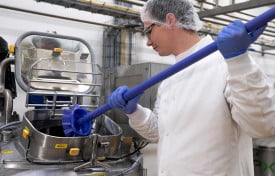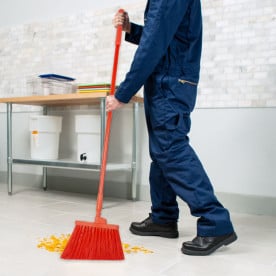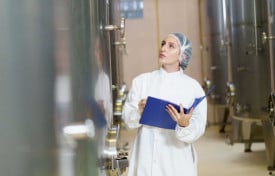Laboratory & QA/QC

- April 23, 2014
Precision thermometers often face the challenge of separated mercury columns, a leading cause of instrument failure. To address this issue without causing damage, specific procedures must be followed diligently. The cooling method involves gradually immersing only the bulb in a dry-ice and alcohol solution, allowing the mercury column to retreat into the bulb. The thermometer is then swung in a short arc to force all the mercury into the bulb. Avoid cooling the stem or mercury column, and exercise caution not to touch the bulb until the mercury emerges. The heating method is applicable to thermometers with a maximum range of 260°C or 500°F, using a beaker of liquid with a flash point above the thermometer's highest indication. Immerse the bulb and stem, heat, and tap to reunite the columns. For organic-filled thermometers, tapping the stem gently against the hand can help rejoin the separated columns. Following these procedures ensures extended instrument life and successful reunification.
- April 23, 2014
Accurate pH analysis is critical in Food Processing areas and Laboratory settings. Small variances may impact food quality, safety, shelf-life, flavor, and consistency. All pH electrodes should be calibrated to pH meters with fresh, unused calibration buffers that bracket the pH value of the product being tested.
For food samples that have a pH range between 4 and 7, electrodes should at a minimum be calibrated using 4.01 and 7.00 pH calibration buffers. Electrodes for samples between 1.68 and 4 should be calibrated with 1.68 and 4.01 pH buffer. For samples between 7 and 10 pH, buffers 7.00 and 10.01 pH are recommended. Also available is 12.46 pH buffer for very high pH products.
Listed above are the most common pH calibration buffers (1.68, 4.01, 7.00, 10.01 and 12.46 pH at 25°C) and many pH meters automatically recognize these values during a calibration procedure. Although not used for calibration, Nelson-Jameson also has 5.00 pH buffer available that is commonly
- April 23, 2014
For everyone in the dairy value chain, the thought of milk contamination is simply unthinkable.
We know that for farmers and their families, competition is tough and professionalization of farming is essential for you to survive and succeed.
Ultimately, healthy products equal healthy profits. This is where the Delvotest can help ensure that any antibiotics given in the herd don't appear in the milk sold.
The Delvotest is a proven, highly respected antibiotic residue testing kit that provides the global dairy value chain (including farmers, dairies, and milk control labs) with peace of mind for a relatively modest investment.
This solution can detect all major antibiotic residues and is suitable for all kinds of milk including cow, sheep, goat, and even buffalo. The kit itself comes in different sizes: So for dairies and milk control labs, we offer larger testing kits, while for farmers we provide a smaller pack with an easy-to-use tray.
Increasingly,
- April 23, 2014
Many pH electrodes are shipped with the electrodes moist. Prior to using your electrode for the first time it needs to be conditioned. While it is always best to refer to the manufacturer instructions for proper electrode conditioning, below are three common recommended steps for conditioning your electrode:
- Remove the protective cap or bottle from the bottom of the sensor and rinse the electrode with distilled or deionized water and blot with a Kimwipe®.
- Place the electrode in a beaker containing one of the liquids listed below (in order of ionic ability to condition the electrode.) Soak for 20 minutes.
3.0 M KCI
4.0 pH buffer
7.0 pH buffer
Note: Never condition or store a pH electrode in water long term exposure to purified water will damage the special glass membrane. - After conditioning the sensor for 20 minutes, rinse the electrode with distilled or deionized water and blot with a Kimwipe. The electrode is now ready for calibration
- April 15, 2014
We have all heard of “helicopter parents,” those that coddle and hover over their kids. Remarkably annoying to educators, scout leaders, etc., one has to at least respect that they (in their own bothersome and overt way) essentially want to ensure their kid’s safety and well-being. Well, what about being a "helicopter" producer?
Don’t you want to ensure the safety and quality of your product when raw ingredients come into your facility or when the finished product heads out on the truck to be sold? Do you worry that your product might be compromised by influences beyond your control? Are you keeping an eye out for things occurring in-house that might compromise your product?
- January 09, 2013
In the food industry and in food safety, accuracy is key. To be able to sample, test, and conduct other lab-related operations on-site or via a third-party lab, is no longer







